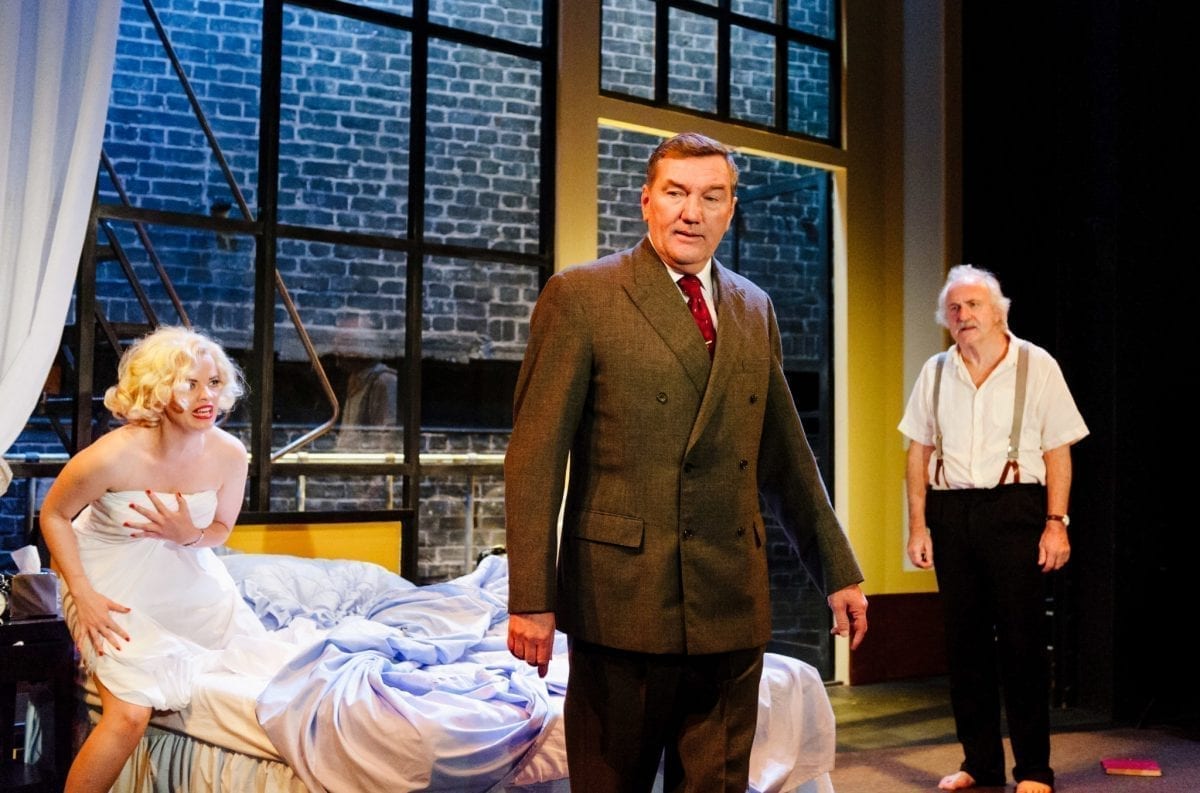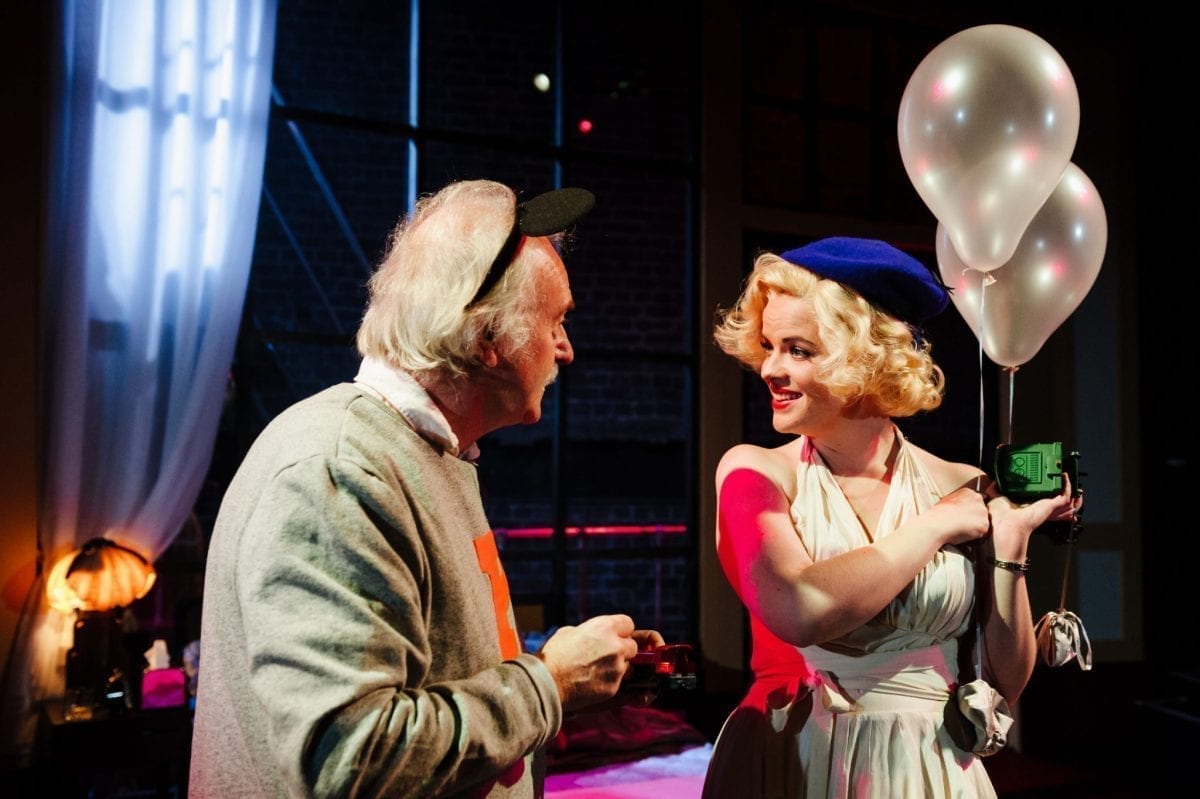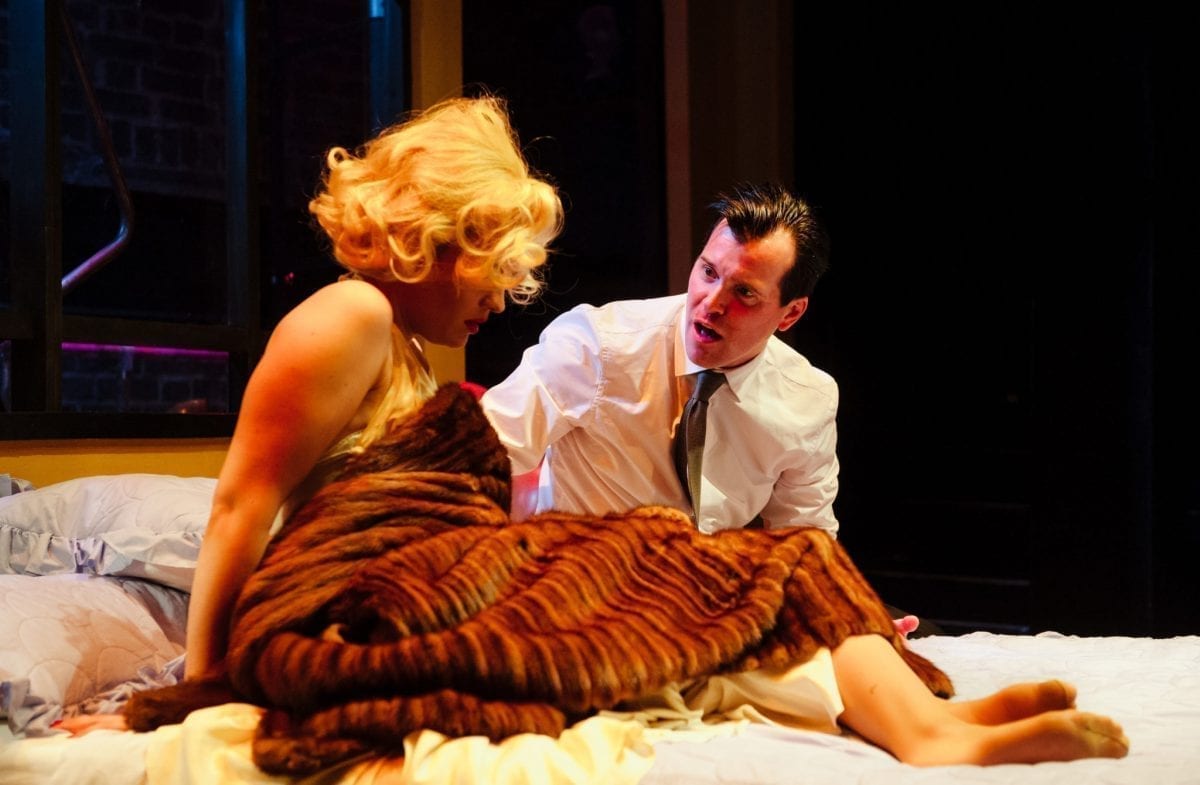Thirty five years ago Insignificance was the breakthrough play of Terry Johnson, and from it came the film directed by Nicholas Roeg that is perhaps more familiar to us. How does it stand up today? The verdict has to be mixed. The first few scenes of each of the two halves have a real intellectual snap and crackle to them and offer plenty of impressive moments of visual drama too. However, the material grows thinner as we proceed, the central devices are overplayed repetitiously, and a long section debating the meaning of solipsism, becomes.. well.. exactly that.
The action takes place in a New York hotel bedroom in 1954 and brings together Albert Einstein, Marilyn Monroe, her first husband, baseball player Joe di Maggio, and Senator Joe McCarthy. The scenes riff off real events in all their lives without suggesting that this is a historical account of real-life encounters. McCarthy is trying to charm or strong-arm Einstein into testifying before Congress as part of his Anti-Communist witch-hunt, while the professor is engaged in completing his unified-field theory. Monroe is in flight from the press and her incensed husband after filming the notorious scene over the street grating in The Seven Year Itch.
At its best this play offers delightful dialectical jousting that juxtaposes the human conflicts and drama of the characters with witty, thoughtfully intercalated debates over relativity, the looming threat of atomic weapons in the Cold War, and the pains and pleasure of celebrity. A particular highlight is the summary of the special theory of relativity given by Monroe using toys and balloons she has bought from a corner store. This is worthy of a Tom Stoppard play and captures the intoxicating combination of high-wire ideas and mad-cap comedy we associate with his work. However, the energy levels dip when Di Maggio enters and the focus shifts to the couple’s troubled relationship. This is authentically represented and very well played but the tone jostles and fights with the intellectual brio elsewhere – really this play should have been about one or the other and not both.
There is nothing much wrong with the four central performances. None makes the mistake of attempting exact imitations of the historical characters involved, but all deliver rich and detailed characterisations. Pick of the bunch is Simon Rouse’s Einstein who captures the other-worldly brilliance and impracticality of a stereotypical professor, while revealing a toughness and shrewdness below the surface that allows him to sympathise and respect Monroe while resisting her beguiling burlesque of herself as the archetypal dumb blonde. Johnson gives the actor playing Monroe plenty of chances to dip in and out of her persona, and Bailey-Johnson rightly emphasises her natural intelligence and fragile tenderness – the scene in which she stands up to McCarthy is particularly well done by both players, producing a still intensity of concentration in the audience.
Mannion and Hembrough both have roles that are on the face of it unsympathetic, and it is to their credit that they find plenty of light and shade between the primary colours of McCarthy’s thuggish obsessions and Di Maggio’s propensity to reach for violence ahead of thought. Mannion finds a wily charm for his debates with Rouse, and Hembrough ultimately finds a sensitivity and self-understanding that leave you thinking Monroe is unwise to leave him.
Production values are to a high standard here. There is an excellent Art Deco set that turns the Arcola’s awkward sightlines and rugged warehouse finish to great advantage. Even the brick wall at the back is plausibly deployed as a brownstone fire-escape backdrop. All credit also to the sound engineer who devised the fierce feline that is Schrödinger’s cat!



